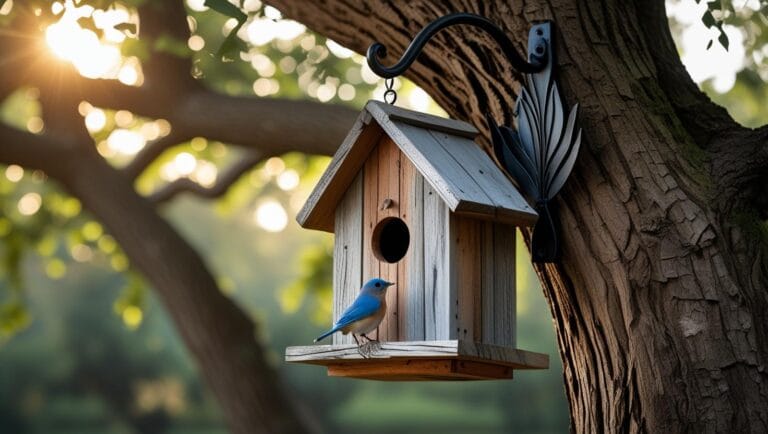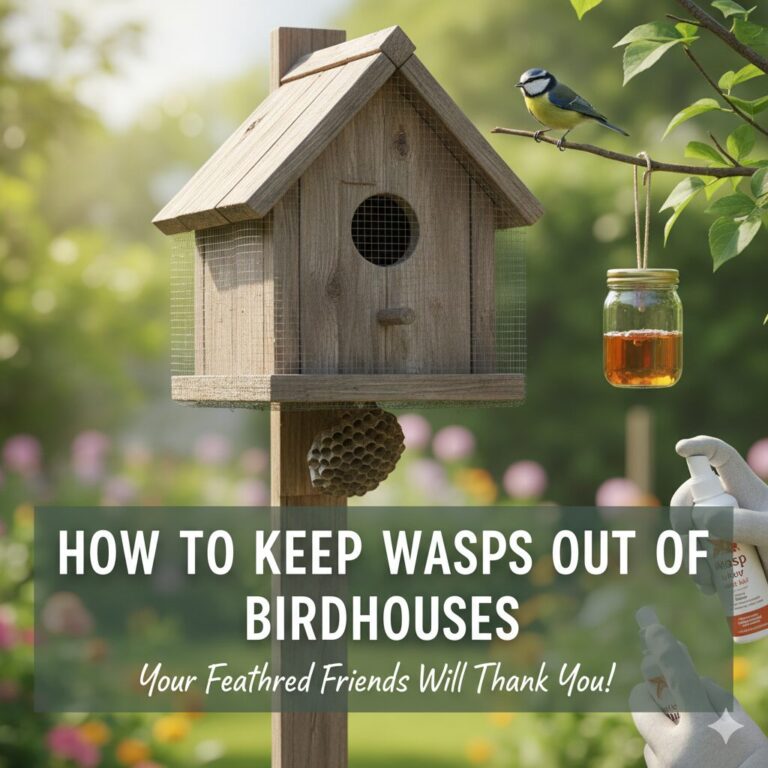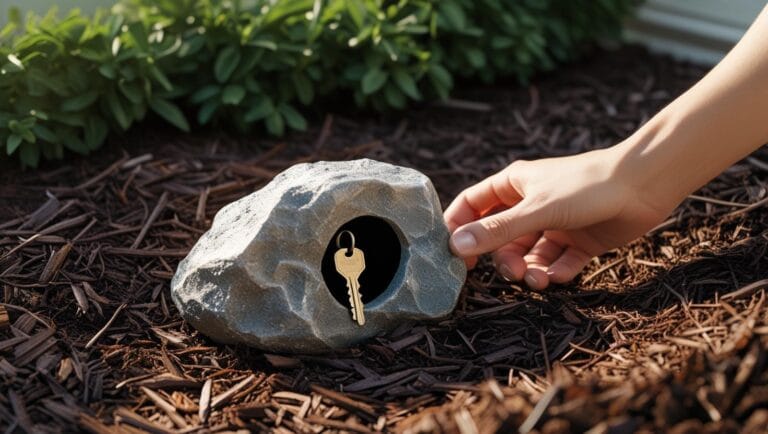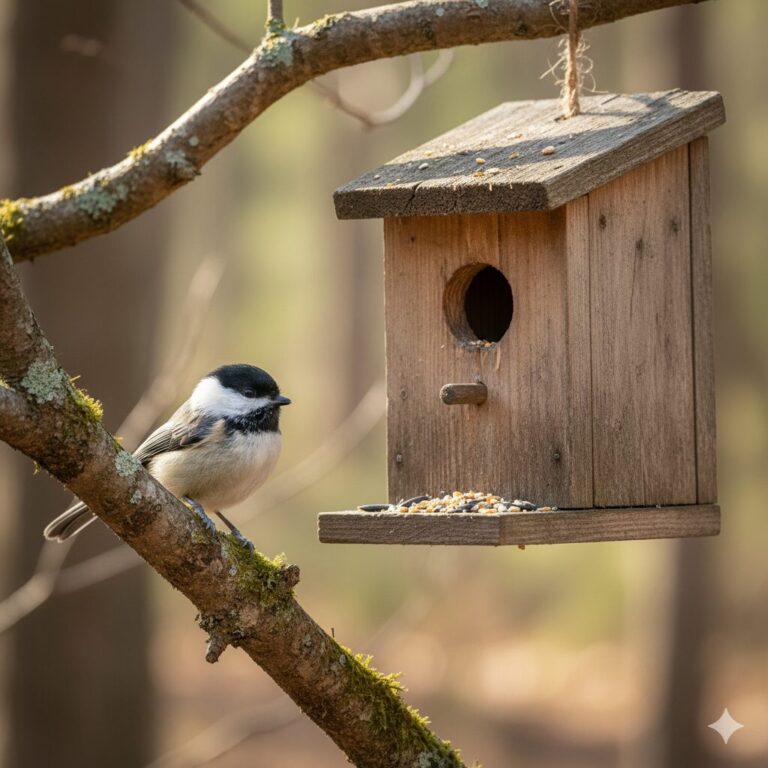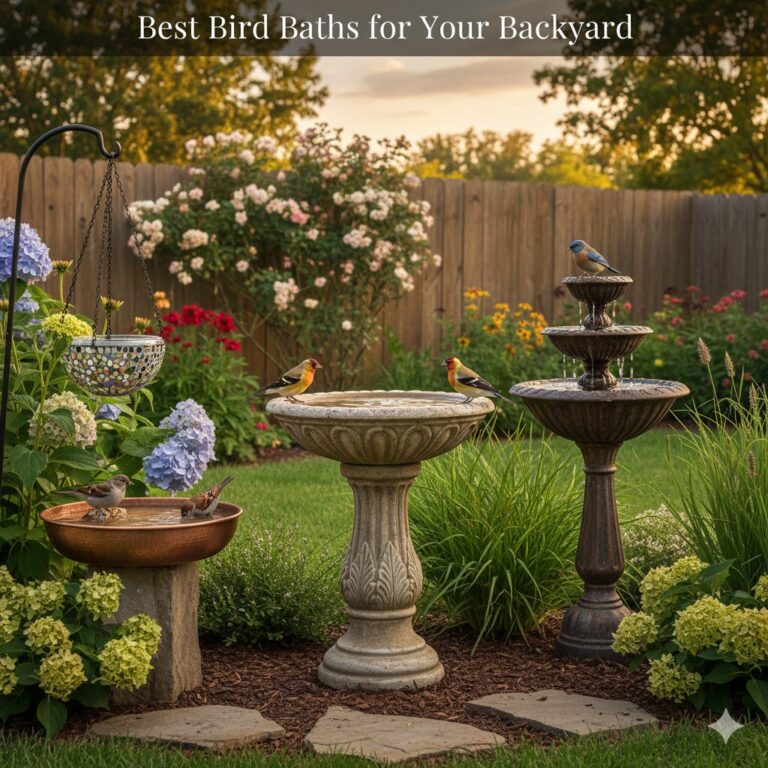When winter arrives, many people assume birdhouses go unused until spring. But the truth is surprising: many backyard birds rely on birdhouses during winter for survival, not nesting. Freezing nights, icy winds, and a shortage of natural cavities make winter one of the hardest seasons for small birds. A sturdy birdhouse can be the shelter that helps them make it through the coldest nights of the year.
Providing winter shelter is one of the most impactful things you can do for local wildlife. Understanding how and why birds use birdhouses during the colder months will help you support them more effectively.
Why Birdhouses Matter in Winter
Protection From Freezing Temperatures
Small birds burn enormous amounts of energy to stay warm. A birdhouse blocks wind, traps heat, and gives birds a place to conserve body heat, especially during sudden temperature drops.
A Safe Hideout From Predators
Winter removes a lot of natural cover. Bare branches expose birds to owls, hawks, raccoons, and neighborhood cats. A birdhouse provides a safe, enclosed space where predators cannot easily reach them.
Shelter From Snowstorms and Freezing Rain
Winter storms can last for hours or days. A birdhouse offers a dry, protected cavity where birds can take refuge until conditions improve.
Group Roosting for Extra Warmth
Some species, like bluebirds and chickadees, will roost together inside the same birdhouse. Their combined body heat can raise the interior temperature significantly, helping them survive cold snaps.
Fewer Natural Cavities
Old trees are often removed in neighborhoods, leaving cavity-nesters with fewer winter roosting spots. Birdhouses fill this critical gap.
Birds Most Likely to Use Birdhouses in Winter
Several familiar backyard birds rely on winter roosting sites, including:
- Bluebirds
- Chickadees
- Titmice
- Nuthatches
- Wrens
- Some sparrows
- Downy and Hairy Woodpeckers (occasionally)
- Screech owls (in larger boxes)
These birds naturally seek cavities, making birdhouses feel like a safe, familiar refuge.
What Makes a Birdhouse Winter-Ready?
Not every birdhouse works well in cold conditions. Here are the features that matter most:
Thick, Insulating Wood
Cedar, pine, or redwood help retain warmth and resist moisture. Avoid plastic or metal, they get dangerously cold.
No Perch
Perches offer predators a foothold. Birds don’t need them in any season.
Ventilation and Drainage
Small ventilation gaps prevent condensation. Drainage holes stop water from freezing inside the box.
Deep Roof Overhang
A wider roof protects the entrance from snow and driving wind.
Clean Interior
Remove old nesting material in late summer or early fall. Birds prefer an open, debris-free roost.
Winter Placement Tips
Placement affects whether birds will use a house in winter:
- Aim the entrance south or southeast to block cold winds.
- Hang it 5–10 feet high for safety and warmth.
- Position near evergreen cover for extra protection.
- Leave birdhouses up year-round, don’t remove them after nesting season.
If you live where snow piles deep, place the house where drifts won’t bury or block the entrance.
Should You Add Bedding?
This depends on climate:
In very cold regions
Add a thin layer of soft wood shavings (never sawdust). This helps birds conserve warmth.
In moderate climates
Leave the house empty. Birds prefer adjusting the interior themselves.
Avoid straw, fabric, or lint, these trap moisture and can harbor mold.
Birdhouses vs. Winter Roost Boxes
Winter roost boxes are specially designed for cold weather. They typically have:
- A lower entrance hole to trap heat
- Interior perches for group roosting
- Less ventilation to retain warmth
- Thicker, insulated walls
If winters are severe where you live, offering both a nesting box and a roost box is ideal.
Helping Birds Even More in Winter
Shelter is only part of winter survival. Two more things help significantly:
Provide High-Energy Food
Suet, mealworms, peanuts, and sunflower seeds help birds maintain body heat.
If you host bluebirds, be sure to check out our guide on what to feed bluebirds in winter.
Offer Unfrozen Water
A heated birdbath ensures birds have access to safe drinking water even during freezing weather.
Final Thoughts
Birdhouses aren’t just for spring, they are lifesaving winter shelters for many backyard birds. By choosing a well-built house, placing it correctly, and keeping it available year-round, you provide birds with a warm, safe refuge during the harshest months.
Winter roosting helps birds conserve energy, avoid predators, survive storms, and endure freezing temperatures. With just a little preparation, your birdhouse can become a vital winter sanctuary for the birds that brighten your yard all year long.
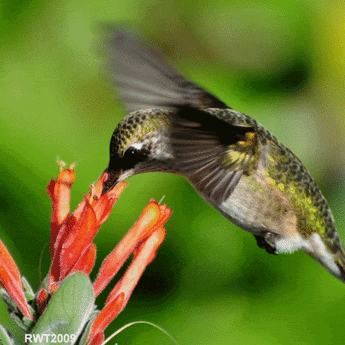
Sanom is a lifelong nature enthusiast and passionate backyard birder who has spent years observing bird behavior and building DIY birdhouses. With a deep curiosity for species like chickadees, wrens, and woodpeckers, he shares practical tips and heartfelt stories to help others attract, shelter, and appreciate the wild birds around them. Whether you’re crafting your first birdhouse or simply enjoying morning songbirds, Iftekhar’s guides on BirdHouseTales.com are designed to bring you closer to the magic of birdwatching.


